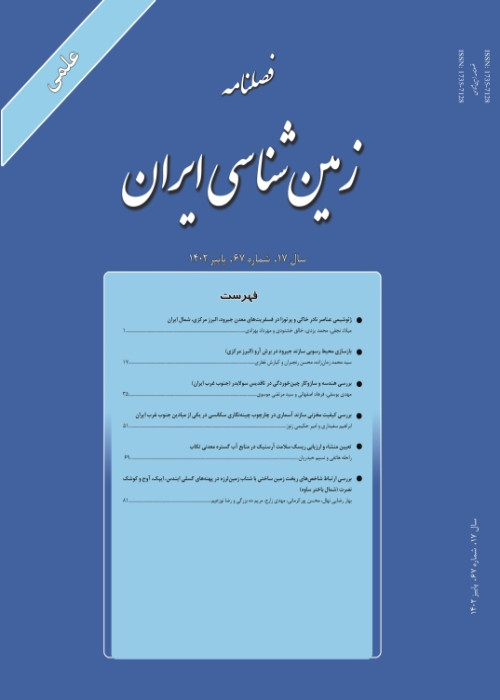Structural evolution of the southern Natanz region and its role in the distribution and concentration of Pb-Zn mineralization
The studied area is structurally located in the western part of the Central Iranian structural zone atthe southwestern termination of the Qom-Zefreh Fault. Our structural data represent the older generation of E-W to NW-SE trending thrust faults that juxtapose Permian- Triassic (Nayband and Shotori Formations) over younger rock units. Most of the thrust faults have been crossed cut with the younger generation of the strike-slip fault system. Major thrust faulting of the area occurred during post Late Cretaceous time. The final post Oligocene strike slip faulting related to the activation of the Qom- Zefreh fault overprinted and crossed cut older structural features. Our economic geological studies in the south Natanz area represent syngeneic strati bond or Sedex-Like type Pb-Zn epigenetic occurrence of these deposits in Permian-Triassic carbonates and barite developed in the Lower Cretaceous carbonate and clastics. The ore deposit development in Permian-Triassic Carbonates have occurred along thrust faults and then redistributed along strike slip faults with normal component. Therefore, genetically, stratiform deposits developed in the Lower Cretaceous carbonates and clastics (Yazdan and Pinavand Ore deposit) occurred in a regional early Cretaceous extensional regime. However, epigenetic deposits developed in Permian-Triassic carbonates (Changarzeh deposit) were generated during the regional post Late Cretaceous compressional regime and redistributed during post Oligocene strike slip deformation.
- حق عضویت دریافتی صرف حمایت از نشریات عضو و نگهداری، تکمیل و توسعه مگیران میشود.
- پرداخت حق اشتراک و دانلود مقالات اجازه بازنشر آن در سایر رسانههای چاپی و دیجیتال را به کاربر نمیدهد.


